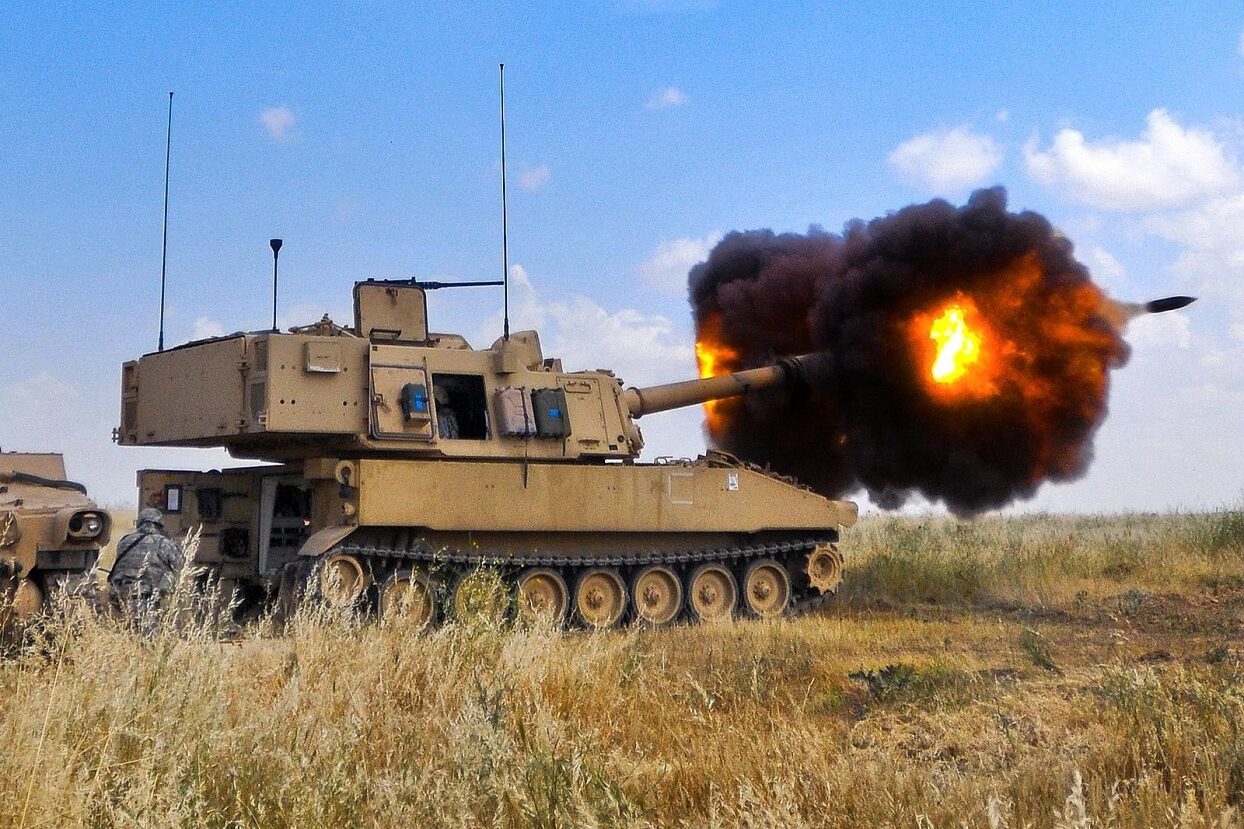5 Toughest Military ‘Big Guns’: The idiom “Call in the big guns” typically refers to those individuals who are very important and/or powerful. However, the term came from the use of large artillery on the battlefield, and while its exact origin remains unknown it likely entered the modern lexicon following the First World War when larger and larger cannons were employed.
This of course begs the question as to what were actually the “biggest guns” to be called in, but these five guns certainly top the list – even if a few were never actually used in combat.
The German Karl-Gerät
Known simply as the “Karl Device” in German, this was a self-propelled siege howitzer that was designed and built by Rheinmetall during the Second World War. With a caliber of 600mm, it fired shells that were some two feet in diameter and weighed 4,780 pounds, making it the largest self-propelled gun ever to be used in combat.
It had to be carried on a heavy transport truck, while multiple vehicles carried the ammunition, and while it saw combat on the Russian Front, it proved too unwieldy to be effective.
Schwerer Gustav
When the Germans “called in” the 800mm Schwerer Gustav it required building two railroad tracks. To say that this gun was huge was an understatement. It was 12 meters high, 47 meters long and weighed 1,350 tonnes. It was capable of firing 10 tonnes shells from its 30 meter long tube and it had a range of 29 miles. Designed to smash the French Maginot Line, which was actually bypassed during the German blitzkrieg in 1940, the Gustav was used in the spring of 1942 during the siege of Sevastopol. A second weapon, Dora, was also used at Stalingrad before being transported back to Germany.
The fact that these guns required a special railroad track to be laid and that they could be easily spotted by enemy aircraft were significant drawbacks, and limited their effectiveness.
Tsar Cannon
Its very name suggests it was a cannon fit for an emperor – the Tsar Cannon was the largest cannon ever built, and as a piece of royal artillery, it was meant to defend the Kremlin, where it has been located for more than 400 years. Cast in 1586, the 890mm cannon wasn’t much to fire a cannonball but could have launched some 1,800 pounds of grapeshot, which would have been devastating to any approaching force.
Little David
There isn’t anything little about the United States military’s heavy siege mortar, which was designed to destroy Japanese fortifications for the planned invasion of Japan during the Second World War. Dubbed “Little David,” it was a 914mm (36-inch) mortar was developed after the Iowa-class battleship’s 16-inch guns proved ineffective against Japanese bunkers at Iwo Jima.
However, the effectiveness of Little David has been long questioned, as it could only launch a 3,660 pound projectile just six miles – while the weapon weighed in at a massive 80,000 pounds. Fortunately, the invasion didn’t happen and Little David was never used in combat.
Mallet’s Mortar
Here is another 914mm gun also never saw combat. Developed as a siege mortar for use during the Crimean War, the massive weapon weighs 42 tons – and remains the largest gun ever built in the UK. When Mallet’s Mortar was used in tests it fired a 2,359-pound shell a distance of 2,759 yards – roughly a mile and a half. Its weight remained an issue, and perhaps this is proof that big guns have such drawbacks that perhaps it is best to stick with smaller guns that can actually get the job done.
Peter Suciu is a Michigan-based writer who has contributed to more than four dozen magazines, newspapers and websites. He regularly writes about military small arms, and is the author of several books on military headgear including A Gallery of Military Headdress, which is available on Amazon.com.

